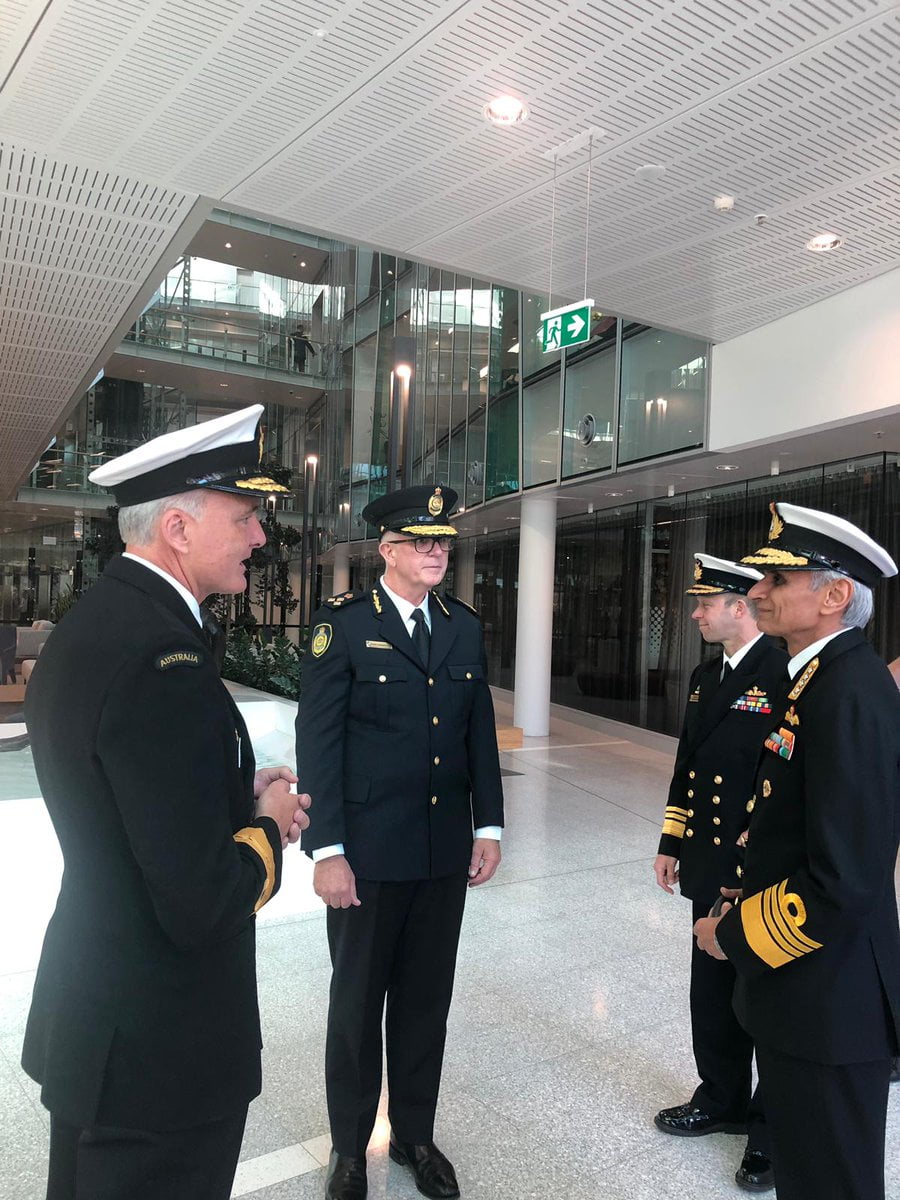By Robbin Laird
Canberra, Australia
I am currently in Australia supporting the next Williams Foundation Seminar on “Fifth Generation Maneuver Warfare.”
I will be leaving next to go to Bahrain for a military conference there and will do a presentation on the shift towards a new approach to warfare by the United States and its core allies, to what I call integrated distributed operations.
Here the capability for smaller force packages to provide presence but through modern C2/ISR systems to be scalable and able to be reinforced by reachback capabilities is a key element for the change.
One of the examples I will cite in the presentation is how the Australian Maritime Border command operates and how its evolving con-ops will incorporate Navy’s latest major capability, the Offshore Patrol Vessel which will be forced assigned in the future.
During my visit, I had a chance to speak with the Commander of the Maritime Border Command, Rear Admiral Lee Goddard, who was kind enough to discuss my analysis and to highlight how the Command operated in the way which I was envisaging the way ahead.
He started with the core point that in effect, the command was always operating in many ways in the so-called “Gray zone” in which events in local engagements could become crisis management flash points.
He argued that the Command was configured to do collaborative integration but that as it modernized it was working to shape an integrated effect where the force assigned units ideally become an integrated force; what some analysts call “tactical decision making at the edge” as a core capability and operational reality.
He noted that the recent meetings of the Australian security agency heads in Brisbane with Southwest Pacific partners were designed in part to build the kinds of cooperative partnerships necessary for the Command to do its job.
The Australian forces need to both understand the perspective of partners, while understanding whom they needed to work with in incident settings or crisis settings.
He argued that “we need to focus on the source of a particular challenge or problem in the region and to work with partners to resolve the challenge there as opposed to simply dealing with the effect created by that source.
“To do this, we obviously need to work with the specific partner agencies or capabilities necessary to resolve a mutual challenge, threat or problem.”
Rear Admiral Goddard noted that in the Australian Border Force headquarters, into which Maritime Border Command’s headquarters is integrated, they have an operations floor on which the various security agencies involved in dealing with the spectrum of civil security operations work together to be able to support or direct operations at a distance dealing with a challenge coming from a regional or maritime source.
“We have on the operations floor representatives of Australian Border Force, Maritime Border Command, Border Command, Customs, Immigration, the ADF, the AFP, intelligence agencies and members of five eyes, and together we work to tailor support to the particular challenge or problem.”
We then discussed how the Command was looking forward to the future of the Offshore Patrol Vessel, which as a Navy asset (not a Maritime Border Command asset) will need to fit into this paradigm and provide the kind of operational capability looked for at sea.
In effect, the evolving C2 and ISR infrastructure being built at the Command aim to be configured to operate seamlessly with the systems which will be delivered on the OPV.
This technology advantage should provide improved communications and real-time SA for the Command, improving the speed and quality of decision making for the command element onboard the OPV to make decisions at the tactical edge.
It is understood that the Navy is building in new capabilities onto the OPV which will allow it to work with a wide variety of assets, to be able to integrate capabilities for a solution on the fly, including the ability to communicate directly to partners operating ashore in their area of interest or with partner assets in the air or on the sea.
In effect, the Navy’s new asset was being built fit for purpose, and in this case, it was building a capability able to deliver decision making at the tactical edge.
Thus, it is a microcosm of a broader set of changes occurring in the ADF which are often referred to as building a fifth-generation force.
Maritime Border Command is in an ideal situation to benefit this broader change within the ADF.
The featured photo shows Admiral Karambir Singh calling on Rear Admiral Lee Goddard, Commander Maritime Border Command, Australia where they held discussions on issues of cooperation between Australia and India. September 2, 2019


